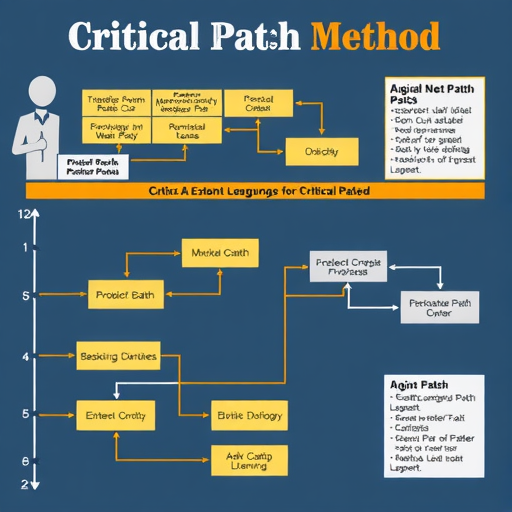What is the Critical Path Method in Project Management
In projects, there are at least a few sequences of dependent or interrelated tasks that need to be done in parallel. The critical path is the longest task sequence that must be executed for project completion.

The critical path tasks are essential activities as if they get delayed, they will delay the project completion. Other project activities in non-critical sequences can be delayed without an impact on the project timeline.
What is the Critical Path Method
A Critical Path Method is a technique used to create an accurate schedule for the project. It is also called the critical path scheduling or the critical path analysis and consists of using the diagram to represent the sequence of project tasks. After these paths or sequences are defined, their durations are calculated through a critical path algorithm for critical path identification.
How to Calculate the Critical Path
Follow the steps below to calculate the project’s critical path:
List Tasks and Estimate Durations
Collect project activities using a work breakdown structure and create a list that shows the expected duration in days. For a realistic duration, use data from previous projects and team members.
Identify Dependencies
Identify which project tasks depend on other tasks’ completion and add a column for preceding tasks to the list. Use the team members’ feedback and your judgment. This will help determine task placement in the diagram.
Create a Diagram
Create a critical path diagram that shows the tasks and dependencies.
Use the Formulas
Use formulas to calculate Early Start, Late Start, Early Finish, Late Finish, and Slack. Perform a forward pass and backward pass and then calculate the slack for the tasks using the formula.
Identify the Critical Path
Activities that have a zero slack make the critical path. The value of the slack means they can be delayed without an effect on the delivery time of the project.
Revise when Executing
Update the diagram as you pass through the project phases in your execution. These steps determine which tasks can float and which are critical. Now that you have the information that you need for the project execution plan and critical path schedule plan have a guarantee that you will deliver the project on time.
Benefits of Using Critical Path Method
The critical path method is a great tool and has many benefits. It helps you deliver your project within budget and on time. Below are some of the benefits of CPM:
Better Team Communication
It fosters effective project team communication. Every stakeholder is involved in the input which brings the expertise of team members from the project together for the betterment of the project. This includes architects, subcontractors, construction managers, electricians, etc.
Facilitates Tasks Prioritization
Determining the project’s critical path will help you with work prioritization. It will enable you to know the priority tasks and support you when there are issues with cost or time. You might not do every activity but you’ll get the critical ones finished.
Helps Create Accurate Schedules
The CPM helps develop an accurate schedule, especially when used with PERT charts. You can discover risks do a better estimation and avoid delays that cost.
Helps Map out Project Plans
The CPM has a visual nature which is beneficial when mapped on the Gantt chart. Having the visuals to communicate the schedule is a plus. Not every project stakeholder likes the project information in the same way. Visual representation enables teams to understand the what and when of delivering expectations.
Disadvantages of the Critical Path Method
It can be time-consuming and complex to use for large projects that have many dependencies and tasks. The process of re-evaluation of the critical path can be overwhelming and lengthy. It often leads to tight schedules where it becomes difficult to adapt to unpredictable circumstances. Sometimes an overemphasis on the critical path leads to the neglecting of noncritical tasks.
Critical Path Method- FAQs
What happens when a project is scheduled by CPM?
A CPM identifies the noncritical and critical tasks for the prevention of delays by identifying the longest sequence of tasks that depend on each other to calculate the shortest duration.
Which item is the most important part of CPM scheduling?
The most important parts of the CPM are the duration and the tasks. To know the schedule, you’ll have to include the latest start and earliest start and end dates of each task.
Is CPM a scheduling tool?
The CPM schedule is a timetable of the project shown in a graphic form. It illustrates the tasks that comprise the project.
Do follow our Methodologies Section for more relevant articles
Do watch the Article Video Here
Do subscribe Our YouTube Channel for more relevant videos


